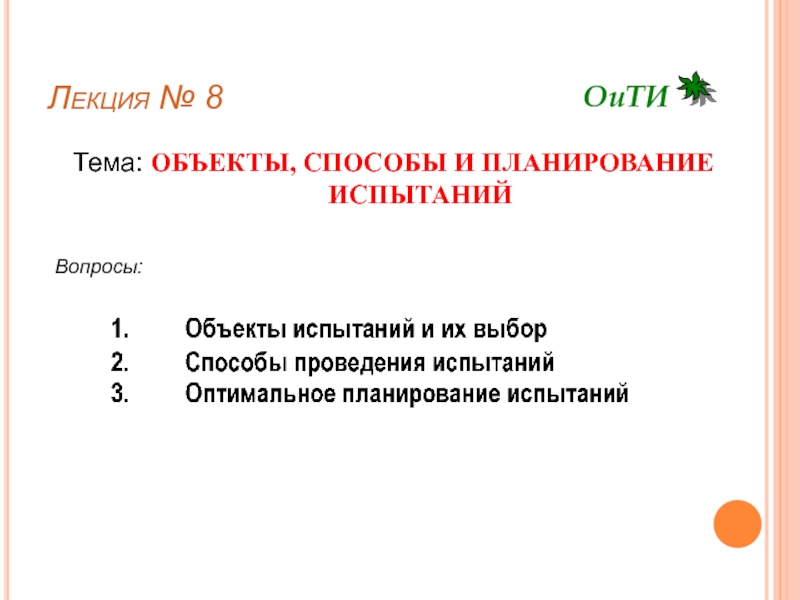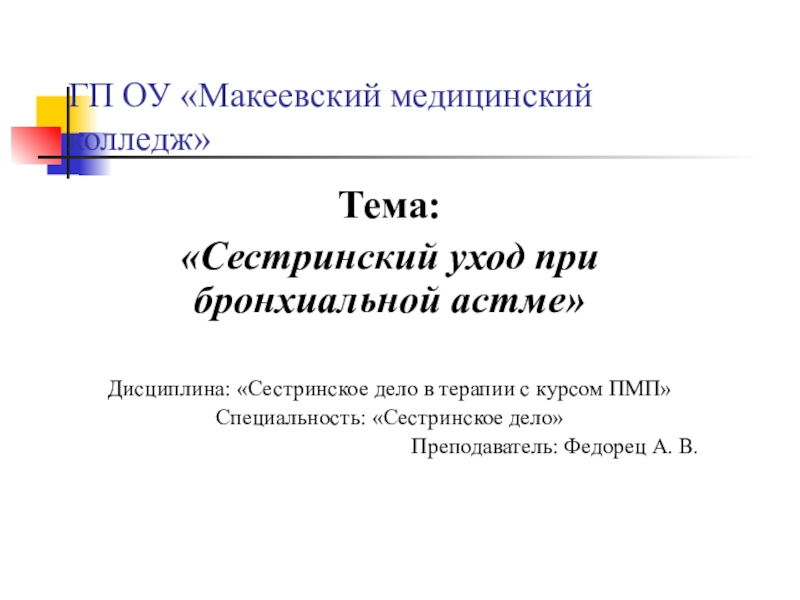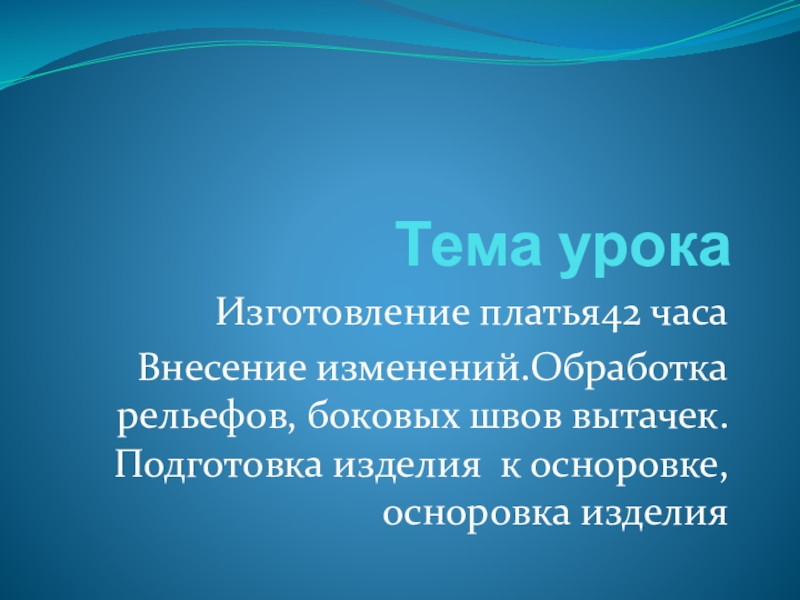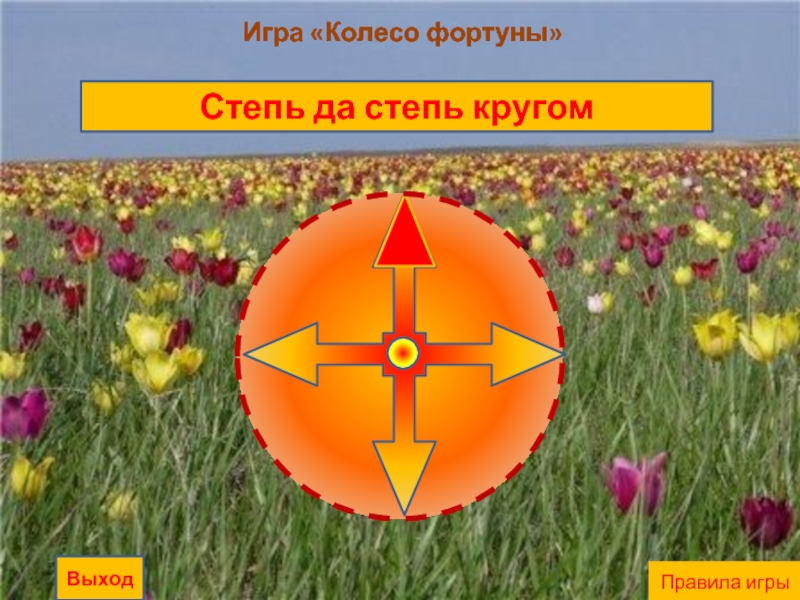Слайд 1Ovarian cancer
with update from ASCO 2013
Siew wei wong
Oncology registrar
Слайд 2Epidemiology
225000 new incidence annually worldwide. Incidence stable since 1970s
1600 new
cases in Australia in 2010
Median age at diagnosis 63
Fourth commonest
cause of cancer death in women in developed countries
>60% of women diagnosed with Stage III/IV
symptoms of abdo pain, bloating, distension, constipation, back pain usually happen in advanced stage
To date, no mortality benefit demonstrated with CA125 and TVUS screening.
Слайд 3Stage at diagnosis and 5-yr survival
Stage I Confined to the
Ovary
20% 85%
IA Growth limited to one ovary, no ascites, capsule intact, no surface tumor extension
IB Same as IA but involves both ovaries
IC IA or IB but with positive washings or ruptured capsule
Stage II Extends to True Pelvis 5% 60%
IIA Involves fallopian tube or uterus
IIB Extension to other pelvic tissues
IIC Either IIA or IIB but with positive washings or ruptured capsule
Stage III Extends Beyond the True Pelvis 58% 26%
IIIA Tumor limited to true pelvis but microscopic positive biopsy outside the pelvis
IIIB Abdominal implants up to 2 cm
IIIC Positive lymph nodes or abdominal implants > 2 cm
Stage IV Distant Disease 17% 12%
Stage at diagnosis 5-yr OS
Слайд 4Subtypes
Epithelial
High grade serous 75%
Mucinous 10%
Endometrioid 10%
Clear cell
Low grade serous
Germ cell/small
cell/Krukenberg
Слайд 5Ovarian Cancer Risk Factors
50 years of age or older
Familial factors
Family
history of breast, ovarian, or colon cancer ?3x baseline risk
Personal
history of breast or colon cancer
Familial cancer syndrome (10%)
BRCA (breast cancer) gene mutation
Hereditary nonpolyposis colon cancer (HNPCC)
Other potential risk factors
Early menarche (younger than 12 years of age)
Late menopause (older than 52 years of age)
Hormone replacement therapy
First pregnancy at older than 30 years of age
Infertility, endometriosis
(fertility Rx does not increase risk)
Слайд 6Ovarian Cancer and Early Detection
Certain factors may reduce a woman's
risk of developing ovarian cancer :
Taking birth control pills for
more than 5 years
Breastfeeding
Pregnancy
A hysterectomy or a tubal ligation
Слайд 7Lifetime Risk of Cancers Associated With Specific Genes
*MMR (mismatch repair)
= HNPCC.
Chen S, et al. J Clin Oncol. 2007:25:1329-1333.
Aarnio
M, et al. Int J Cancer. 1999:81:214-218.
Слайд 8Red Flags for Cancer Susceptibility: BRCA1/BRCA2
Multiple family members with ovarian
or breast cancer
Age of onset of breast cancer
Younger than
50 years of age (premenopausal)
Bilateral breast cancer
Both breast and ovarian cancer in same patient
Ashkenazi Jewish ancestry (2% chance of BRCA)
Male breast cancer
Слайд 9Natural History
Precise natural history is poorly understood
There is no direct
evidence for a premalignant lesion in ovarian cancer.
The entire
peritoneum is at risk because peritoneal carcinomatosis may develop after an oophorectomy
Слайд 10Ovarian Ca Screening for general population: PLCO trial
68557 participants 55-74yo
w/o prior hx of oophorectomy
annual Ca125 for 6 years and
TVUS for 4 years in intervention grp
Median f/u:12.4 years
Results:
Similar detection rate (5.7 v 4.7 per 10000 person-yrs), HR 1.21 CI:0.99-1.48
<60% of ovarian ca detected were high grade serous subtype.
No difference in ovarian ca mortality (3.1 v 2.6 per 10000 person-years) HR 1.18 CI:0.82-1.71.
Harm from false-positive screen: 3285 cases with 15% major complication rate from surgical intervention!
JAMA 2011:305 (22):2295-2303
Слайд 11Ovarian Ca screening in ‘high risk grp’
UKFOCCS Phase 1: annual
Ca125 and TVUS
Sensitivity >80%, NPV 99%, PPV 25% (ie 4
operations for 1 case of ca)
Only 30% of screen detected ca were stage 1-2
89% of screen detected ca were in BRCA carriers.
Only 4/2960 cases of screen detected ca in women with +FH!
UKFOCCS Phase 2: 4mthly Ca125 and annual TVUS plus ROCA (change in algorithmic scale of Ca125)
Breast or ovarian ca family, BRCA?proportion, HNPCC or Ashkenazi
4531 women median age 45 (35-84), only 1/3 >50yo
sens: 75% (or lower!) spec 96% PPV 13%
12 cases of screen-detected cancer, with 42% of cases in stage 1/2
11/12 underwent optimal cytoreduction (does not translate to cure)
14.4% underwent RRSO, 3.3% underwent RRSO due to false+, 4/653 had incidental ca (? Even higher number if proper serial sectioning method)
JCO 2013;31:49-57
ASCO 2013 abstr 5502
Слайд 12Ovarian Ca screening
Major organisations do not recommend ovarian cancer screening:
Poor
understanding of natural history
Poor performance of current test in detecting
early stage disease
No survival benefit demonstrated even in ‘high risk grp”
Potential for harm
RRBSO remains the standard of care for BRCA carriers and reduces risk of OC by 75-96%
Current estimated uptake of RRBSO in BRCA carriers by countries:
Australia 38%
UK 40%
France 70%
Canada 57%
Слайд 13Management of Ovarian Cancer
Surgical staging and debulking
Слайд 14Initial Surgical management
Surgery is usually performed upfront regardless of stage:
Obtain
tissue diagnosis
Perform surgical staging
Optimal debulking of tumour: improves response to
chemo, decreases disease related symptoms and potentially improves immune response
Exception: poor ECOG, disease ‘too bulky’ or other primary not able to be excluded. Consider neoadjuvant chemotherapy
Engage experienced gynaeonc surgeon for optimal primary debulking (GOG: <1cm residual disease, but ?less is even better)
Minimal benefit in interval debulking after ‘suboptimal primary debulking’
Benefit mainly lies with pts who received poor surgery upfront. EORTC v GOG152 trial
Слайд 17Stage I And II OC: role of adjuvant chemotherapy
8% 5
year improvement in OS was shown from a metaanalyses of
13 trials in stage 1 disease. However 90% of pts did not receive proper surgical staging/lymph node sampling.
Another metaanalyses showed adjuvant chemo significantly improved PFS and OS
Subgrp analyses showed benefit only in early stage disease that was incompletely resected
One trial showed benefit only in high risk disease.
ACTION trial showed improvement in RFS but only trend towards OS benefit. In pts who had complete surgical staging, there was no RFS or OS benefit
Слайд 18Adjuvant Rx for early stage Ovarian Ca
NCCN guideline suggests adjuvant
chemo in stage 1C or stage II, clear cell OC
(any stage), and grade 3 OC
No consensus on optimal chemotherapy agent and duration of treatment:
?carboplatin and paclitaxel
3 cycles vs 6 cycles of adjuvant Rx: GOG 157 showed non-significant trend towards less relapse but similar OS and more toxicity with 6 cycles.
Слайд 19Postop Management of advanced ovarian cancer
Слайд 20Standard: ?Carbo AUC6 + Pacli
GOG 111 and OV10: Cisp/Paclitaxel v
Cisp/Cyclo showed 11% ARR favouring taxane NEJM 1996;334(1):1-6, JNCI 2000;92(9):699-708.
Carboplatin
is at least as effective as Cisplatin Ann Oncol 1999;10 supp1:35-41
SCOTROC: Docetaxel is as effective as Paclitaxel but more myelosuppressive JNCI 2004;96(22):1682
No additional benefit of continuing chemo beyond 6 cycles.
2006 metaanalysis of 60 trials with 15609 women:
Platinum monotherapy v Platinum-based combi: HR 1.16 CI:0.86-1.58)
Platinum-non taxane v Platinum-taxane: HR 1.28 CI:1.07-1.53)
Слайд 21Improving outcome beyond Carbo/Paclitaxel
First line Carbo/Paclitaxel showed RR 70-80% with
more than 50% achieving CR after optimal cytoreduction
However, up to
70% relapse within 1-3 years.
Слайд 22Better schedule for Carbo/Pacli
JCOG 3016 trial Lancet 2009;374:1331-1338
637 pts stage
II to IV (65% SIII, 15% SIV)
Carbo AUC6 + Pacli180mg/m2
D1 q3/52 v Carbo AUC6 D1 + Pacli 80mg/m2 D1,8,15 q3/52
Improved PFS 17.2m v 28m HR 0.71 CI: 0.58-0.88
Improved 3-yr OS 65.1% v 72.1% HR 0.75 CI 0.57-0.98
Improved OS at 6.4-yr fu: 62m v not reached HR 0.79 CI 0.63-0.99 (ASCO 2012)
Greater toxicity with dose dense strategy:
Neutropenia 88% v 92%, G3 or 4 anaemia 44% v 69%, Less treatment completion 61% v 73%
Similar rate of neurotox and febrile neut (9%)
Слайд 23Better carbo/taxol schedule
MITO-7 JCO 2013;31 suppl;abstr LBA5501
822 pts stage IC
to IV (66% SIII, 18% SIV)
Carbo AUC2 +Pacli 80mg/m2 both
D1,8,15 q3/52 v C AUC6+P 180mg/m2 q3/52 v
20m f/u: Similar PFS (18.8m v 16.5m HR 0.88 CI 0.72-1.06). OS immature
Better tolerated with less neuropathy (6% v16%), neutropenia, renal dysfunction (0% v 2%). Better QOL
Upcoming trials: ICON-8
Слайд 24ADDING THIRD CYTOTOXIC
Rationale: addition of non-cross resistant drug to platinum/paclitaxel
combi may improve OS
Multiple trials. Biggest is GOG182-ICON5: JCO 2009;27(9):1419-1425
5
arms study of adding either Gemcitabine, Topotecan or Caelyx to backbone of Carbo/pacli
Study closed after 4312 pts accrued due to no PFS and OS benefit over CP
Слайд 25Role of targeted agents: pazopanib
AGO-OVAR16:
Pazopanib (24m) v placebo in
pts who do not have progression after surgery and completion
of >4 cycles of platinum-taxane chemo (940pts, FIGO II-IV, 85% in CR at entry). Improved PFS from 12.3m to 17.9m. OS immature ASCO 2013. JCO 2013;31 sup:abstr LBA5503
Слайд 26Role of Bevacizumab
GOG 218: carbo/paclitaxel v CP+Bev 15mg/kg v CP+Bev->Bev
12m maintenance only managed to show improved PFS from 10.3m
to 11.2m to 14.1m. 2.3% risk of GI perf. No OS benefit: 39m in both arms. Note: crossover to Bev allowed at progression.
ICON-7: carbo/pacli v carbo/pacli+BevBev 36 wks at 7.5mg/kg Bev. Include 9% high risk stage early stage. Improved PFS at 42m (22m v 24m) but no difference in OS. In pts at high risk of progression (stage IV or stage III or residual tumour >1cm) there is improved PFS 14m v 18m, and OS 29m v 37m (posthoc analysis). 2013 QOL update showed no benefit with addition of Bev. Final OS pending
BOOST will re-examine 15m v 30m of Bev (if we believe final OS data from ICON-7
Слайд 27Role of intraperitoneal chemotherapy
Rationale: direct delivery of drug into peritoneal
cavity increase the dose intensity without increasing plasma drug levels
and potentially decrease systemic SEs. Only use in optimally debulked pts
GOG104:
IV Cyclo +IV or IP Cisp100mg/m2 q3/52.
Improved OS with IP group 49m v 41m but at the cost of abdominal pain
GOG114:
6 cycles IV Cisp 75mg/m2+Pacli135mg/m2 q3/52 v 2 cycles of IV Carbo AUC9 q4/52 followed by 6 cycles of IP Cisp 100mg/m2+IV Paclitaxel 135mg/m2 q3/52
Improved OS with IP 63m v 52m, but only 18% received >2 IP cycles
GOG172:
IV Cisp 75mg/m2 +Pacli 135mg/m2 q3/52 v IV Pacli 135mg/m2+ IP Cisp 100mg/m2 + IP pacli 60mg/m2 d8
Improved OS with IP 65.6m v 49.7m. More haem toxicities
?benefit from additional dose of paclitaxel
Poor uptake: concern re tox and logistics issues
Слайд 29Consider in women with extensive disease and poor ECOG. No
consensus on who should receive NACT. ?all pts need preop
laporoscopy for diagnostic and staging
Advantage in responders: less extensive surgery and less morbidity from surgery
EORTC 55971 Gynecol Oncol 2010;119(1):1-3
670 pts w potentially operable stage III and IV ovarian ca
Primary debulking surgery, then 6 cycles of chemo or 3 cycles of neoadjuvant carbo/paclitaxel with interval debulking surgery, then more chemo.
Improved optimal debulking rate (residual <1cm) 41.6% v 80.6%. (cw 75% optimal primary debulking rate in experienced centres)
Less periop complications: death 0.7% v 2.5%, infection 2 v 8&, haemorrhage 4 v 7%
Similar PFS (12m) and (OS 29 v 30m). Pts who had primary surgery had improved OS if no residual disease (45 v 38m) or <1cm disease (32 v 27m)!
Nb: 3% did not have met ovarian ca at laparotomy! 25% did not receive standard C/P
Слайд 30Neoadjuvant chemo: MRC CHORUS
550 Pts stage III to IV. 72
centres in UK and 2 in NZ
Non-inferiority trial with similar
design to EORTC 55971
Exclude >6% decrease in 3-yr estimated OS of 50%
Results: non-inferior PFS and OS
PFS: 11.3m v 10.7m
OS: 24.5m v 22.8m
Less postop morbidity/mortality with NACT
G3 or 4 complications: 14% v 24%
D/c within 2/52: 92% v 74%
Death within 28 days: 5.6% v 0.5%
Criticism of ‘suboptimal surgery’:
av duration of debulking surgery of 2 hrs,
Rate of residual disease >1cm in primary surgery arm of 61% v 25%
High rate of mortality
Nonetheless, both EORTC and CHORUS showed similar results
Neoadjuvant chemo is an alternative esp in women who are deemed unlikely to have residual microscopic disease post primary debulking.
Слайд 32Current Questions in Recurrent Disease
How do you define recurrence?
Physical exam
Imaging
Chemical
When
do you treat?
Symptoms
Imaged lesions
Chemical
Слайд 33264
236
203
167
129
103
69
53
38
31
19
265
247
211
165
131
94
72
51
38
31
22
Rustin G, et al. ASCO 2009. Abstract 1. Reprinted with
permission from the author.
Delayed
Early
Patients at Risk, n
Mos Since Randomization
Proportion Surviving
6
12
18
24
30
36
42
48
54
60
HR:
1.00 (95% CI: 0.82-1.22; P = .98)
Abs diff at 2 yrs: -0.1%
(95% CI diff: -6.8, 6.3%)
Early
Delayed
0
0.25
0.50
0.75
1.00
0
Overall Survival
Слайд 34Pros & Cons of Treating
CA-125 Increase
Cons
Potential Rx of false
positives
No improvement in OS
Exhaust treatment options
Toxicity
Impaired QoL
Cost
No ideal agent available
May
be homeopathic only
Pros
Stay ahead of disease
Improve survival?
Prevent symptoms
Maximize QoL
“Active approach” to care
Intuitive to do something
Minimize patient anxiety
Avoids patient “relocating”
Shortens visit time
Слайд 35Primary
Treatment
End of
Frontline
Therapy
0 Mos
6 Mos
12 Mos
Refractory
Resistant
Sensitive
Platinum Sensitivity
Слайд 36Recurrent Ovarian Cancer: Effect of Platinum-Free Interval and Survival
Days
Percentage
Pujade-Lauraine E,
et al. ASCO 2002. Abstract 829.
1000
900
800
700
600
500
400
300
200
100
0
100
90
80
70
60
50
40
30
20
10
0
Слайд 371978
Cisplatin
Carboplatin
Altretamine
Paclitaxel
Topotecan
Liposomal doxorubicin (PLD) (accelerated)
Liposomal doxorubicin (full)
Gemcitabine
(with carboplatin)
2006
1989
1990
1992
1996
1999
2005
2009
Trabectedin; EU only
(with PLD)
FDA-Approved Drugs
in Ovarian Cancer
1964
Melphalan
Doxorubicin
1974
Слайд 38Positive Trials in Recurrent
Ovarian Cancer
Paclitaxel vs topotecan[1,2]
Topotecan vs pegylated liposomal
doxorubicin (PLD)[3,4]
Platinum vs platinum + paclitaxel[5]
Carboplatin vs carboplatin + gemcitabine[6]
Carboplatin
+ PLD vs carboplatin + paclitaxel[7]
PLD vs PLD + trabectedin[8]
1. ten Bokkel Huinink WW, et al. J Clin Oncol. 1997;15:2183-2193. 2. ten Bokkel Huinink WW, et al.
Ann Oncol. 2004;15:100-103. 3. Gordon AN, et al J Clin Oncol. 2001;19:3312-3322. 4. Gordon AN, et al. Gynecol Oncol. 2004;95:1-8. 5. Parmar MK, et al. Lancet. 2003;361:2099-2106. 6. Pfisterer J, et al. J Clin Oncol. 2006;24:4699-4707. 7. Vasey P, et al. ECCO ESMO 2009. Abstract 18LBA. 8. Monk BJ, et al. ESMO 2008. Abstract LBA4
Слайд 39Recurrent Ovarian Cancer
ICON-4
CALYPSO:
Intergroup
OCEANS: CarboAUC4/Gem (up to 10 cycles)+/-Bev 15mg/kg in
platinum sensitive OC, followed by Bev maintenance. Improved PFS 8.4m
v 12.4m, RR 57.4% v 78.5%. No OS benefit at second interim analysis! ?crossover 33.3m v 35.2m JCO 2012;17:2039-2045





































![Ovarian cancer with update from ASCO 2013 Positive Trials in Recurrent Ovarian CancerPaclitaxel vs topotecan[1,2]Topotecan vs pegylated liposomal Positive Trials in Recurrent Ovarian CancerPaclitaxel vs topotecan[1,2]Topotecan vs pegylated liposomal doxorubicin (PLD)[3,4]Platinum vs platinum + paclitaxel[5]Carboplatin](/img/thumbs/2a91d8ca80ab889b7286fe8fd2118bf7-800x.jpg)




















